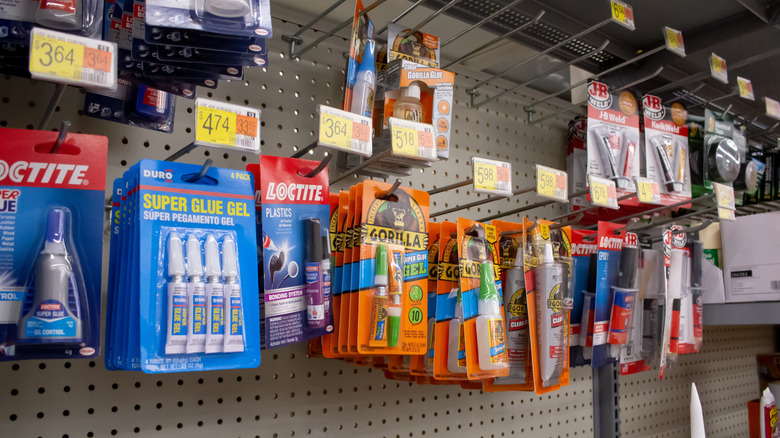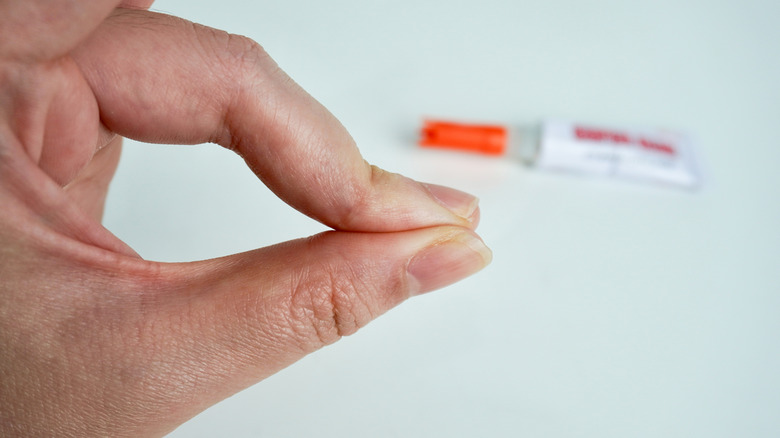Super Glue Wouldn't Exist If Not For An Accidental Discovery In WW2
The age-old proverb "Necessity is the mother of invention" came to fruition because people needed to find solutions (or come up with inventions) to solve problems that were usually quite urgent. For example, our exploration of space led NASA to a host of new products, including memory foam, cordless tools, and cellphone cameras, among others. However, wars have arguably been the most significant drivers of necessity, leading to the creation of numerous inventions. World War I gave us flamethrowers, mobile X-ray machines, and air traffic control, while World War II gave us everything from zippers, wristwatches, and Pilates to Kleenex and Super Glue.
But as crazy as that sounds, the powerful adhesive was meant to have an entirely different use altogether. During World War II, a team of scientists at Eastman Kodak (the same company that makes film for cameras), led by Dr. Harry Coover, was working with acrylate monomers to create an optically clear plastic for gun sights. Eastman Kodak's involvement wasn't a stretch, as they'd previously designed gunsight lenses for WWI fighter planes.
During their research, they discovered cyanoacrylates. Unfortunately, thanks to the thin layer of moisture that nearly every object retains, it was extremely tough to work with, because the moisture caused the chemical to polymerize and stick to virtually everything it touched. Coover and his team discarded the sticky substance and instead used glass to make tens of thousands of gunsights. For a time, cyanoacrylates were largely forgotten.
It's crazy, it's super, and it locks tight every time!
In 1951, Coover was transferred to Kodak's research labs in Kingsport, Tennessee, tasked to oversee a team "to find a tougher, more heat-resistant acrylate polymer for jet canopies." One of the members — Dr. Fred Joyner — spread a thin layer of ethyl cyanoacrylate between the prisms of a refractometer to check its refractive index, but quickly discovered he couldn't separate them, essentially ruining a $700 piece of equipment.
According to Coover, he realized they had a "unique adhesive" that didn't require heat or pressure to bond, thanks to the ubiquitous presence of moisture on everything, which is the real catalyst causing polymerization. After further testing proved that it permanently bonded things together every time, Coover filed a patent (number 2,768,109) for "Alcohol-catalyzed alpha-cyanoacrylate adhesive compositions" in 1954. Over the next four years, they refined it for commercialization, and in 1958, Kodak sold it under the name "Eastman 910." However, it was the discovery of cyanoacrylates during WWII that led to what has since become generically known as Super Glue (which can even seal windshield cracks).
During the Vietnam War, field surgeons discovered that spraying cyanoacrylates over open wounds stopped bleeding instantly, giving soldiers precious time so they could be transported to medical facilities for additional treatment and thus saving untold lives. The FDA eventually approved cyanoacrylates for specific medical uses. Coover was awarded more than 460 patents and even appeared in a TV commercial for the product. After retiring from Eastman Kodak as Vice President, he formed his own consulting firm and subsequently became President of the Loctite Corporation in 1985.

